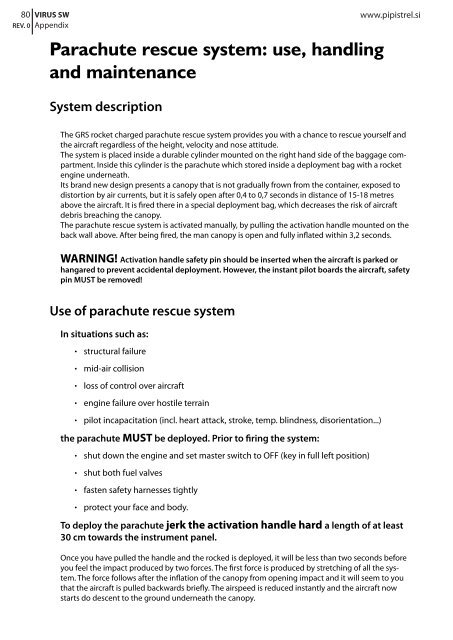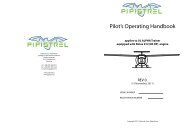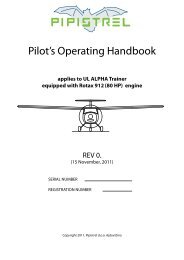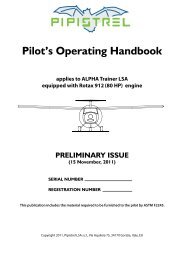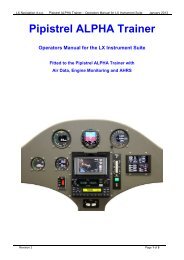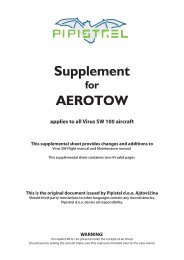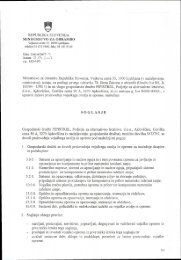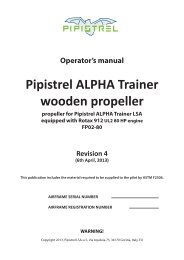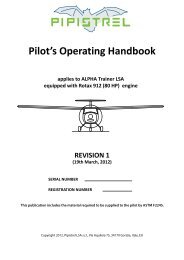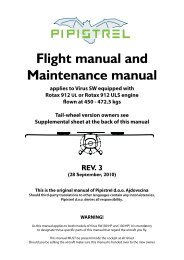Introduction - Pipistrel
Introduction - Pipistrel
Introduction - Pipistrel
Create successful ePaper yourself
Turn your PDF publications into a flip-book with our unique Google optimized e-Paper software.
80 VIRUS SW www.pipistrel.si<br />
REV. 0 Appendix<br />
Parachute rescue system: use, handling<br />
and maintenance<br />
System description<br />
The GRS rocket charged parachute rescue system provides you with a chance to rescue yourself and<br />
the aircraft regardless of the height, velocity and nose attitude.<br />
The system is placed inside a durable cylinder mounted on the right hand side of the baggage compartment.<br />
Inside this cylinder is the parachute which stored inside a deployment bag with a rocket<br />
engine underneath.<br />
Its brand new design presents a canopy that is not gradually frown from the container, exposed to<br />
distortion by air currents, but it is safely open after 0,4 to 0,7 seconds in distance of 15-18 metres<br />
above the aircraft. It is fired there in a special deployment bag, which decreases the risk of aircraft<br />
debris breaching the canopy.<br />
The parachute rescue system is activated manually, by pulling the activation handle mounted on the<br />
back wall above. After being fired, the man canopy is open and fully inflated within 3,2 seconds.<br />
WARNING! Activation handle safety pin should be inserted when the aircraft is parked or<br />
hangared to prevent accidental deployment. However, the instant pilot boards the aircraft, safety<br />
pin MUST be removed!<br />
Use of parachute rescue system<br />
In situations such as:<br />
• structural failure<br />
• mid-air collision<br />
• loss of control over aircraft<br />
• engine failure over hostile terrain<br />
• pilot incapacitation (incl. heart attack, stroke, temp. blindness, disorientation...)<br />
the parachute MUST be deployed. Prior to firing the system:<br />
• shut down the engine and set master switch to OFF (key in full left position)<br />
• shut both fuel valves<br />
• fasten safety harnesses tightly<br />
• protect your face and body.<br />
To deploy the parachute jerk the activation handle hard a length of at least<br />
30 cm towards the instrument panel.<br />
Once you have pulled the handle and the rocked is deployed, it will be less than two seconds before<br />
you feel the impact produced by two forces. The first force is produced by stretching of all the system.<br />
The force follows after the inflation of the canopy from opening impact and it will seem to you<br />
that the aircraft is pulled backwards briefly. The airspeed is reduced instantly and the aircraft now<br />
starts do descent to the ground underneath the canopy.


